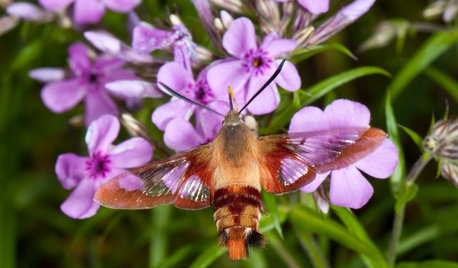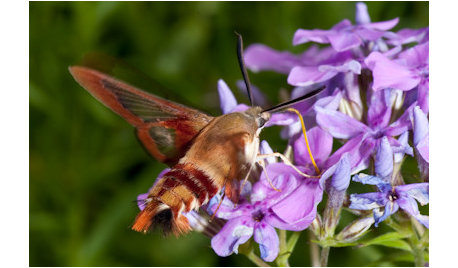Largest moth I have seen
Phildeez
10 years ago
Related Stories

GARDENING GUIDESHummingbird or Moth? See Why You Want Clearwings Around
These fascinating moths may be helpful pollinators for your garden. Here’s how to coax them your way
Full Story
HOUSEPLANTSOrchids 101: How to Keep Your Moth Orchids Alive and Blooming
Growing Phalaenopsis — and getting it to flower again — is easier than you might think
Full Story
FUN HOUZZ9 Places for the TV We Haven't Seen — Yet
Tube watching ventures into uncharted territory. How far would you go in your own home?
Full Story
DECORATING GUIDESThe Dumbest Decorating Decisions I’ve Ever Made
Caution: Do not try these at home
Full Story
COFFEE WITH AN ARCHITECTA Few Things I Would Like to Ask Frank Lloyd Wright
It could take a lifetime to understand Frank Lloyd Wright's work — less if we had answers to a few simple questions
Full Story
GARDENING GUIDESHow I Learned to Be an Imperfect Gardener
Letting go can lead to a deeper level of gardening and a richer relationship with the landscape. Here's how one nature lover did it
Full Story
GARDENING GUIDESGreat Design Plant: Prairie Phlox Draws Winged Beauties
Beauty and a sweet fragrance are just the beginning with this spring bloomer. Watch the butterflies and moths descend on it for nectar
Full Story
EVENTSHappening Now: The Brimfield Antique Show
Take a peek at the largest outdoor antiques show in the United States
Full Story
RUSTIC STYLEHouzz Tour: Home’s Idaho Flavor Balances Rustic and Luxe
Local flora, fauna and textures come together in this relaxing vacation house on the state’s largest lake
Full Story
EVENTSGet Inspired at the 40th Annual American Craft Council Show
In San Francisco this weekend? Celebrate modern design and craft at the West Coast’s largest show of handmade creations
Full StoryMore Discussions







Leafhead
MissSherry
Related Professionals
Wakefield Landscape Contractors · Biloxi Landscape Contractors · New Providence Landscape Contractors · Palatine Landscape Contractors · Paterson Landscape Contractors · Quincy Landscape Contractors · Sammamish Landscape Contractors · St. Louis Landscape Contractors · Burbank Fence Contractors · Columbia Fence Contractors · Eastvale Fence Contractors · Paramount Fence Contractors · Surfside Fence Contractors · Boulder City Fence Contractors · Gibsonton Window ContractorsKC Clark - Zone 2012-6a OH
PhildeezOriginal Author
MissSherry
PhildeezOriginal Author
larry_gene
PhildeezOriginal Author
butterflymomok
larry_gene
PhildeezOriginal Author